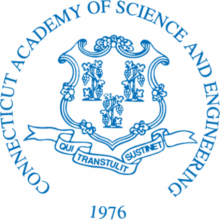Charlie Kaman was not easily discouraged. In the 1940s, when others thought helicopters were frivolous designs with little potential for the aerospace industry, Charlie was hard at work in his mother’s garage, developing an improved model with a 1933 Pontiac engine. The work he did that day and the years to follow changed his life and the lives of thousands who have been airlifted and rescued from the jungles of Vietnam and the waters off Iran in helicopters manufactured by the Kaman Aircraft Corporation — the company that Charlie Kaman started in 1945 by selling $1,000 in stock to each of two close friends. Kaman developed the first gas turbine-powered helicopter, now in the Smithsonian Museum collection.
Charles Kaman grew up in Washington, D.C. His father was a German immigrant who supervised construction on the Supreme Court. As a youngster, Charles set records for hand-launched model gliders, dreaming of becoming a professional pilot. When a tonsillectomy left him deaf in one ear, he had to change plans. In 1940 he earned a bachelor’s degree in aeronautical engineering from Catholic University. He turned down a job with the Tommy Dorsey Band to take a position in the propeller performance unit at Hamilton Standard, a division of United Aircraft, where he met his mentor, Igor Sikorsky. In a speech to the Wings Club in 1996, he said “At that moment, something clicked. I knew Igor was onto something big. I revered Igor Sikorsky, and I always retained a tremendous amount of respect for what he accomplished.”
After becoming head of the aerodynamics department, he partnered with Sikorsky to design rotors for helicopters needed during WW II. This work required application of the Goldstein Vortex Theory to analyze performance of airplane propellers in hovering and vertical flight — a tedious, time-consuming endeavor that frustrated his efforts to efficiently complete the necessary calculations. Since PCs had not yet been invented, Mr. Kaman essentially invented his own: “At home on my own time, I began designing a special computer with the hope of reducing dramatically the time required for individual point calculations. I created a new calculating machine, which I called the Aerodynamic Calculator. The device, which used relays, switches, condensers and electronic tube circuits working on logarithmic scales, reduced the calculation time to five minutes.”
Charles Kaman’s interests extend beyond helicopters and aerodynamics. He is an avid music and animal lover, a guitarist who used his knowledge of helicopter design to build guitars with a natural sound from aerospace composites. The round-backed Ovation guitar laid the foundation for his music company. Today, Kaman Music is a global manufacturer and distributor of instruments for professional and amateur musicians. Mr. Kaman and his wife, Roberta, also founded the Fidelco Guide Dog Foundation, dedicated to training guide dogs for work with the blind. This organization is unique because it not only breeds suitable dogs, but provides an “in-community”training program whereby instructors bring dogs into the home to train both pet and owner. The Kamans were named Melvin Jones Fellows by Lions Club International for their years of service to the blind.
Charles Kaman lived his personal credo – success hinges on one’s determination to work hard despite obstacles which ultimately serve to “sweeten the fruit of success.” His life’s work has yielded many honors, including the 1997 National Aeronautic Association’s Wright Brothers Memorial Trophy, the 1996 National Medal of Technology, the 1996 Connecticut Medal of Technology, and the US Department of Defense Distinguished Public Service Medal. He is a member of the National Academy of Engineering and the Connecticut Academy of Science and Engineering.


